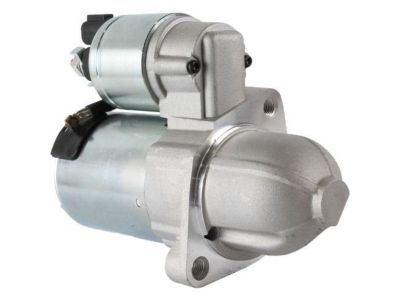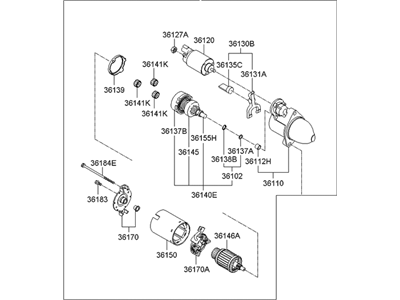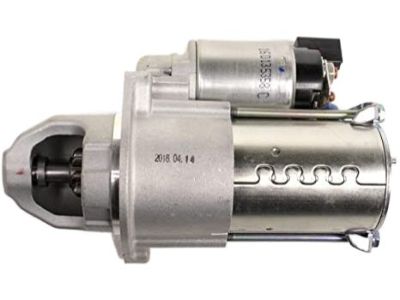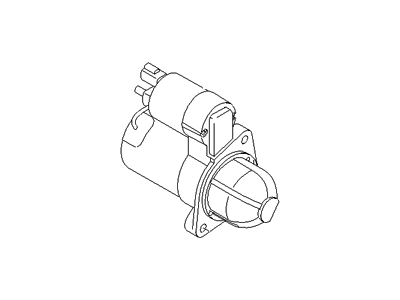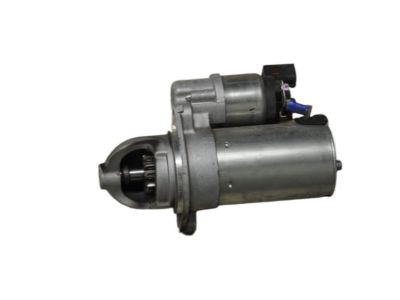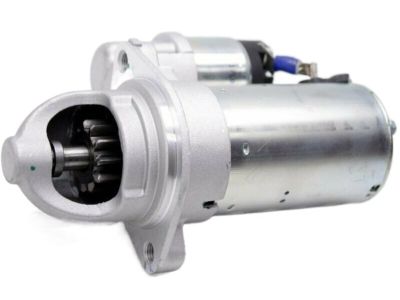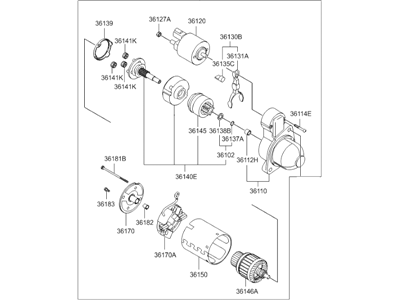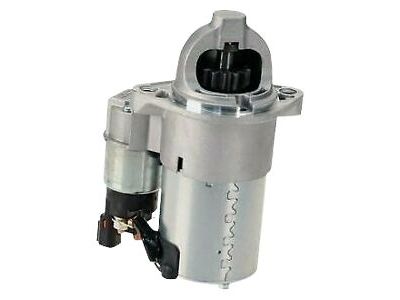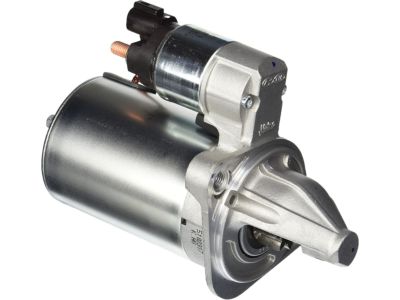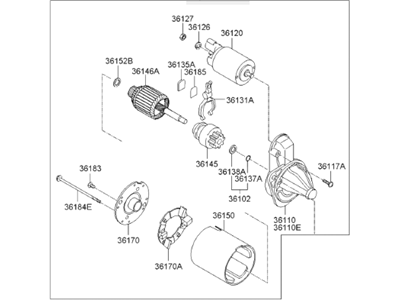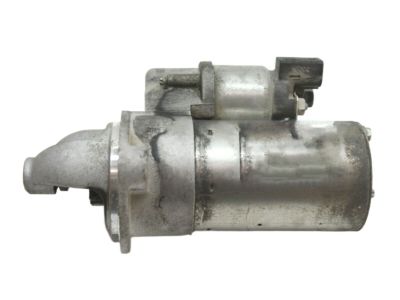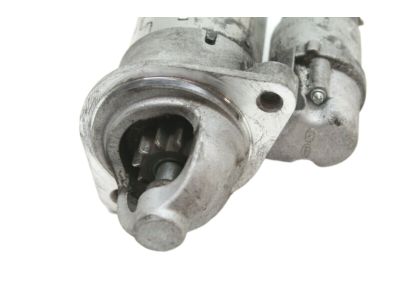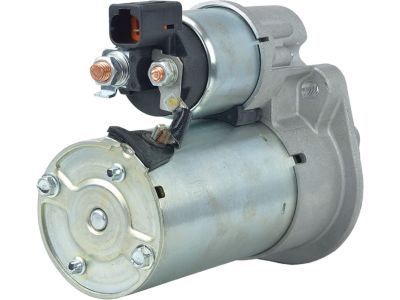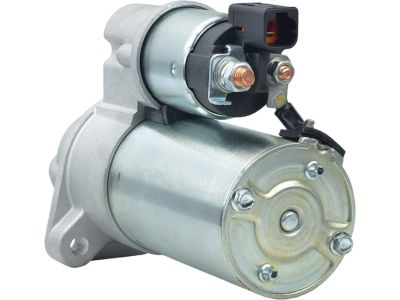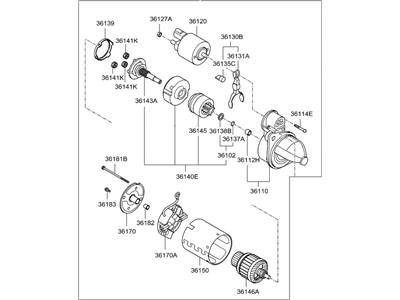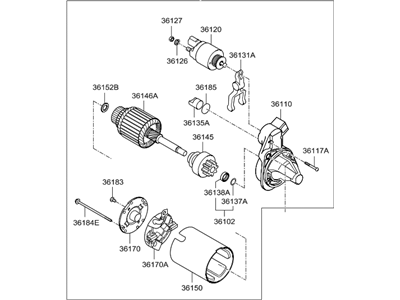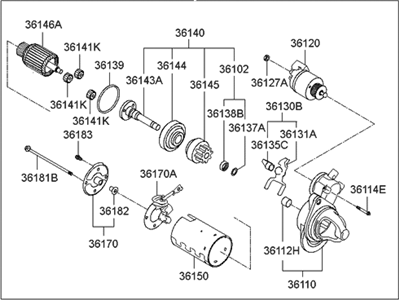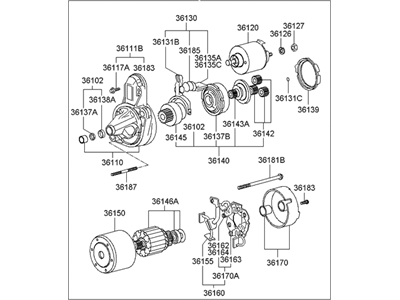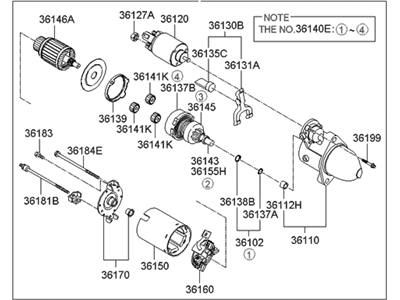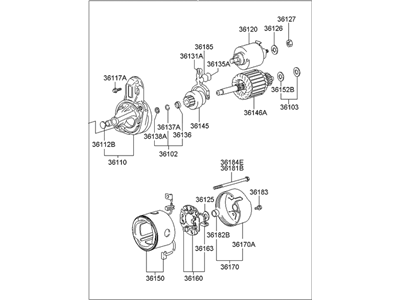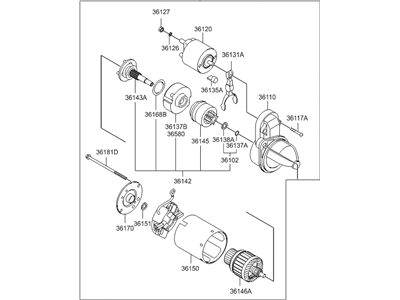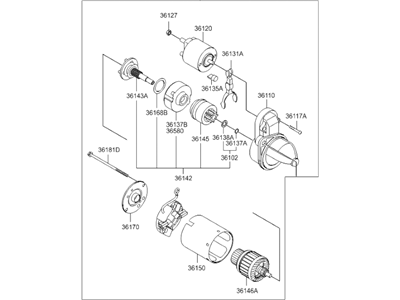×
- Hello
- Login or Register
- Quick Links
- Live Chat
- Track Order
- Parts Availability
- RMA
- Help Center
- Contact Us
- Shop for
- Hyundai Parts
- Hyundai Accessories


My Garage
My Account
Cart
Genuine Hyundai Starter Motor
Starter Ignition- Select Vehicle by Model
- Select Vehicle by VIN
Select Vehicle by Model
orMake
Model
Year
Select Vehicle by VIN
For the most accurate results, select vehicle by your VIN (Vehicle Identification Number).
123 Starter motors found

Hyundai Starter Assembly
Part Number: 36100-2G100$273.21 MSRP: $383.85You Save: $110.64 (29%)Ships in 1-3 Business DaysProduct Specifications- Other Name: Starter
- Replaced by: 36100-2G100--SJ

Hyundai Starter Assembly
Part Number: 36100-25020$283.80 MSRP: $398.73You Save: $114.93 (29%)Ships in 1-3 Business DaysProduct Specifications- Other Name: Starter

Hyundai Starter Assembly
Part Number: 36100-2G210$226.05 MSRP: $317.60You Save: $91.55 (29%)Ships in 1-3 Business Days
Hyundai Starter Assembly
Part Number: 36100-2E200$222.16 MSRP: $312.13You Save: $89.97 (29%)Ships in 1-2 Business DaysProduct Specifications- Other Name: Starter

Hyundai Starter Assembly
Part Number: 36100-2B100$331.01 MSRP: $465.06You Save: $134.05 (29%)Ships in 1-3 Business DaysProduct Specifications- Other Name: Starter

Hyundai Starter Assembly
Part Number: 36100-2E550$374.62 MSRP: $530.95You Save: $156.33 (30%)Ships in 1-3 Business DaysProduct Specifications- Other Name: Starter

Hyundai Starter Assembly
Part Number: 36100-2E551$374.60 MSRP: $530.92You Save: $156.32 (30%)Ships in 1-3 Business DaysProduct Specifications- Other Name: Starter
Hyundai Starter Assembly
Part Number: 36100-2G200$169.54 MSRP: $238.19You Save: $68.65 (29%)Ships in 1-3 Business DaysProduct Specifications- Other Name: Starter
- Replaces: 36100-2G000
Hyundai Starter Assembly
Part Number: 36100-2G250$212.85 MSRP: $299.05You Save: $86.20 (29%)Ships in 1-3 Business DaysProduct Specifications- Other Name: Starter
Hyundai Starter Assembly
Part Number: 36100-2B510$330.99 MSRP: $465.03You Save: $134.04 (29%)Ships in 1-3 Business DaysProduct Specifications- Other Name: Starter
Hyundai Starter Assembly
Part Number: 36100-3C240$429.53 MSRP: $608.78You Save: $179.25 (30%)Ships in 1-3 Business DaysProduct Specifications- Other Name: Starter
Hyundai Starter Assembly
Part Number: 36100-2G400$207.86 MSRP: $292.03You Save: $84.17 (29%)Ships in 1-3 Business DaysProduct Specifications- Other Name: Starter
Hyundai Starter Assembly
Part Number: 36100-23060$283.80 MSRP: $398.73You Save: $114.93 (29%)Ships in 1-3 Business DaysProduct Specifications- Replaced by: 36100-23061
Hyundai Starter Assembly
Part Number: 36100-3C150$357.05 MSRP: $506.05You Save: $149.00 (30%)Ships in 1-3 Business DaysProduct Specifications- Other Name: Starter
- Replaces: 36100-3C180
Hyundai Starter Assembly
Part Number: 36100-22805$362.49 MSRP: $513.75You Save: $151.26 (30%)Ships in 1-3 Business DaysProduct Specifications- Other Name: Starter
- Manufacturer Note: 0.9KW
- Replaces: 36100-22800
Hyundai Starter Assembly
Part Number: 36100-2E131$264.98 MSRP: $372.29You Save: $107.31 (29%)Ships in 1-3 Business DaysProduct Specifications- Other Name: Starter
Hyundai Starter Assembly
Part Number: 36100-2E121$240.56 MSRP: $337.98You Save: $97.42 (29%)Ships in 1-3 Business DaysProduct Specifications- Other Name: Starter
Hyundai Starter Assembly
Part Number: 36100-2G000$169.54 MSRP: $238.19You Save: $68.65 (29%)Ships in 1-3 Business DaysProduct Specifications- Replaced by: 36100-2G200
Hyundai Starter Assembly
Part Number: 36100-2E120$331.04 MSRP: $465.09You Save: $134.05 (29%)Ships in 1-3 Business DaysProduct Specifications- Other Name: Starter
Hyundai Starter Assembly
Part Number: 36100-23161$283.80 MSRP: $398.73You Save: $114.93 (29%)Ships in 1-3 Business DaysProduct Specifications- Other Name: Starter
| Page 1 of 7 |Next >
1-20 of 123 Results
About Hyundai Starter Motor
A Hyundai starter is an electric motor needed to turn over the engine to start moving. You can find the starter motor for a specific model, trim and year in the traditional way or through advance use of internet. Your Hyundai starter is one of the most important factors in making your car run at its finest performance; thus, your Hyundai will surely include a reliable starter. A Starter motor is a very essential part of the vehicle's electronic system. For optimum performance from your Hyundai starter, you should replace this unit as soon as it needs.
Hyundai Starter Motor Parts Questions & Experts Answers
- Q: What are the troubleshooting steps for a non-turning starter motor on Hyundai Accent?A:For diagnosing a starter that does not turn over, first ascertain that the shift lever is in neutral or park (on automatic transaxles), or the clutch pedal is depressed (on manual transaxles). Check if the battery has been charged and all cables and terminals, both at the battery and solenoid for the starter, are clean and firmly in contact. You can diagnose a problem with your battery by observing headlights; they should dim after few seconds if there is need to recharge or replace it. If ignition switch operates while lights remain bright or it dims, then current goes to the starter motor meaning that the issue lies in it. If starter motor turns slowly despite presence of good battery this implies fault in either resistance on circuit or faulty starter motor itself. Disconnect engine/transmission ground strap along with battery leads and starter/solenoid wiring for possible circuit problems. Clean them up, re-connect them back then check full battery voltage at positive lead connection of solenoid using test light/voltmeter to ensure sound grounding; apply petroleum jelly at its terminal ends so as to prevent corrosion. When starting motor spins but fails to crank engine, it means that its clutch is slipping thereby requiring replacement. In case solenoid clicks but starting motor doesn't run: double-check batteries, main contacts for solenoids used or else start gear (or look out for seizure of an engine). It could be a burnt fusible link, bad cell in a battery, defective solenoid or any other thing which makes plunger of solenoid inaudible during actuation of switch. By attaching jumper between positive (+) side of car's power source and wire terminal on ignition switch feeding into solenoid from here mentioned above you will be able to test one of these parts known as solenoid; when however armature starts moving due to supply flow from here you will feel something kicking underneath those foot pedals provided there is nothing wrong with neutral start switch or wiring inside. If starting motor still fails to operate, take the starter/solenoid unit out for further check-up and repair. Make sure that connections are tight and battery is charged properly on slow cranking starter motors. Partial engine seizure or incorrect oil viscosity may cause a slow crank. To do this, warm the engine up to normal operating temperature, disconnect the coil wire and attach a voltmeter across positive and negative posts of battery. Start it up then watch closely as voltage reading keeps on balancing subsequent in thirty seconds which should not be exceeded by started engine motor run time. A reading of 9 volts or more at cranking speed is normal. Less than 9 volts suggests potential issues with the solenoid contacts, starter motor, discharged battery or poor connections.
- Q: How to disconnect and remove the starter motor on Hyundai Elantra?A:Detach the battery cable from the negative terminal. On 1.4L, 1.6L, 1.8L and 2.0L models after 2014, remove the air intake duct and the air cleaner assembly for that model. If you are working on a 2012 and earlier 2.0L model, detach the shift cable(s) from the transaxle. In case of any work on a 2.0L model starting from 2017, take away its battery tray as well as those in which you are going to fix it in a vehicle that has been jacked up and stands supported with jack stands by removing its lower splash shield.On all these models, remove its brake vacuum pump when working on them. When dealing with this variety of vehicles built before year two thousand eleven (2011), its speedo-cable should be disconnected from transmission.Undo bolt then detach battery cable from starter motor; also pull out wires attached to solenoid.Press down towards ground to release harness connector from starter solenoid and loosen nut then disconnect battery cable.Remove bolts securing starter motor while supporting it during removal process.Take note: On cars fitted with either of these engines (14 &16 liters), you will have to take out the starter through under body while for others it comes out through engine upper side.Installation is in reverse order of removal.The torque tightening value is used by starter mounting bolts again.
- Q: How toremove and install the starter motor on a Hyundai Sonata?A:Disconnect the cable from the negative terminal of the battery. For 2010 and earlier models, remove the lower engine splash shield, if so equipped. Detach the electrical connectors from the starter/solenoid assembly. Remove the starter heat shield, if so equipped. On 1999 through 2005 models, disconnect the speedometer cable and the transaxle shifter cable. Remove the starter motor mounting fasteners and remove the starter. The starter is retained by two fasteners- make sure the battery is disconnected before removing the starter. Installation is the reverse of removal. For 2011 and later models, remove the air inlet tube and air filter housing. Remove the electronic throttle body. Remove the MAP/IAT sensor. Remove the intake manifold support bracket bolts and bracket. Disconnect the electrical connectors from the starter solenoid. Remove the starter mounting bolts and lift the starter out from the top of the engine compartment. Installation is the reverse of removal.
Related Hyundai Parts
Browse by Model
Accent Starter Motor Azera Starter Motor Elantra GT Starter Motor Elantra N Starter Motor Elantra Starter Motor Elantra Touring Starter Motor Entourage Starter Motor Equus Starter Motor Excel Starter Motor Genesis Coupe Starter Motor Genesis G70 Starter Motor Genesis G80 Starter Motor Genesis G90 Starter Motor Genesis GV70 Starter Motor Genesis GV80 Starter Motor Genesis Starter Motor Kona N Starter Motor Kona Starter Motor Palisade Starter Motor Santa Cruz Starter Motor Santa Fe Sport Starter Motor Santa Fe Starter Motor Santa Fe XL Starter Motor Scoupe Starter Motor Sonata Starter Motor Tiburon Starter Motor Tucson Starter Motor Veloster N Starter Motor Veloster Starter Motor Venue Starter Motor Veracruz Starter Motor XG300 Starter Motor XG350 Starter Motor
